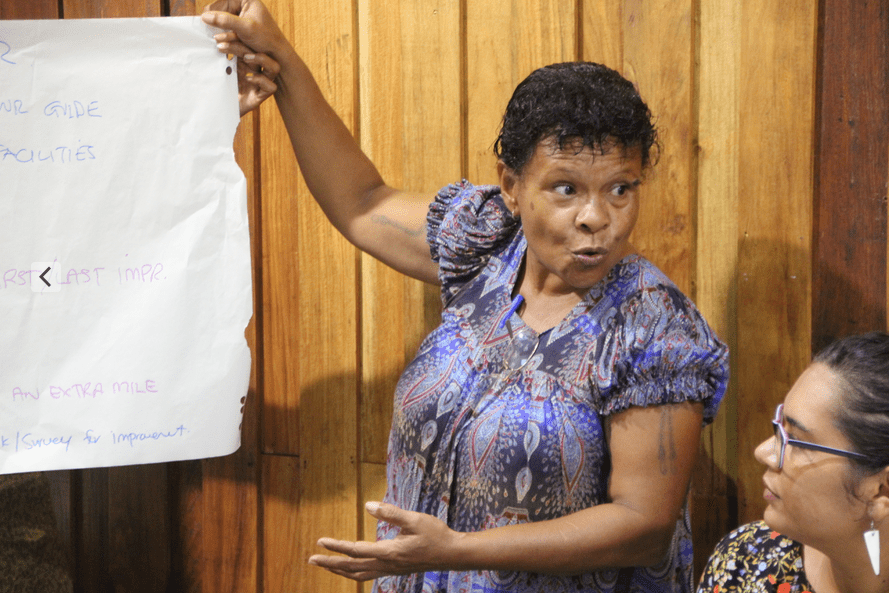How To Fill In A Strategyzer Test Card
(Thanks for reading, I’ve recently created a better version of this article here)
There’s a really crucial moment that comes right as someone finishes filling in a Business Model Canvas.
Usually, people either feel delighted – they’ve created a winning business, or they feel deflated – their idea seems destined for failure.
In both cases a Test Card will help, and in both cases people will hate filling it in.
That’s because a Test Card takes your guesses and turns them into verifiable assumptions.
People hate that.
They don’t want to verify their assumptions, they want to treat them as fact and keep moving.
The good news is, assumptions testing is massively valuable for you and your model.
If you’re right, then you have added evidence to support your beliefs, which will help in attracting investment, raising your valuation, recruiting staff, and will give you the confidence to boost your marketing budget.
If you’re wrong, you can begin the grieving process early and with minimal regret, then get started on making changes to the idea.
Grieving is the right word – being wrong about something feels terrible.
My question is, do you want to go through the process now or once you’ve built up expectations with your friends, family, team and customers?
Test cards are brutally honest and relentlessly fair.
They ask you four questions that may feel uncomfortable, but are here for your benefit.
These give your idea every chance to prove its worth.
They are:
We believe that…
To verify that, we will…
And measure…
We are right if…
These are great questions, because they create clarity and set a fair benchmark.
You shouldn’t be afraid of stating your beliefs, or afraid of checking your guesses.
A good test should be measurable, and the pass rate should be set before the results are in.
That’s what is so great about this process – you can’t say it isn’t fair.
Let’s look at each point in more detail…
We believe that…
It’s important that we state our most critical assumptions, rather than letting them hide beneath the surface.
There are a lot of assumptions you can test, and we want to focus on those that are crucial to the model, i.e. the business won’t work if this assumption is wrong.
Examples might include:
We believe that customers are willing to change providers for a 10% discount.
We believe that our team can serve 90 customers per hour.
We believe that we can form a partnership with…
We believe that customers will pay an $20 per month for unlimited access to our platform.
We believe that participants can reliably lose 2kg per month by following our program.
We believe that customers want to get more…
We believe that there’s customer interest in joining a group that…
If those assumptions are wrong, the business model has to change.
Either they’re targeting the wrong people, or using the wrong Value Proposition, or using the wrong pricing strategy, or need to find different partners.
To verify that, we will…
Now things get real.
How will you prove that this assumption is true?
We want to design a demonstration, proving our intuition to our team (and ourselves).
This test should be cheap to implement, and not require a huge amount of effort.
Examples might include:
We will run a Facebook Ad campaign that targets…
We will run a trial where we produce…
We will gather letters of intent from our Key Partners…
We will send out an early bird offer…
We will run a pilot with 10 participants…
We will trial several messages and see which ones get the most interest…
We will talk to 20 prospective customers to gauge their interest in...
And measure…
Most people want to run the test but only go by gut feel, “vibing it out”.
Measurement is essential, it helps us separate a good response from a great response.
We also want to ensure that we measure the most crucial indicators, e.g. measuring how many people sign up rather than the number of people who say positive things.
Examples might include:
We will measure the number of clicks each ad receives OR pre-orders we receive.
We will measure the amount of widgets we can produce in a day under realistic conditions.
We will measure the number of letters of intent we get back.
We will measure the number of sign-ups or enquiries from our campaign.
We will measure the number of people who complete the program AND/OR how much progress they each make.
We will measure the different rates of clicks/purchases from each type of ad.
We will measure how many people ask us if they can join the group.
We are right if…
Our natural temptation is to “shoot the arrow and paint the target around it”.
This is unhelpful, as it may justify a mediocre market response, or let us retroactively claim that our earlier targets were unrealistically high.
For these reasons, it’s worth setting the pass/fail criteria in advance, then sticking to your guns.
Examples might include:
We are right if 8 out of every 100 clicks turns into a sale.
We are right if we can produce at least 95 widgets during the trial day.
We are right if our partners agree to these terms (within X% tolerance).
We are right if 35 people register for the next workshop.
We are right if we meet our crowdfunding target of $40,000.
It’s good to check each statement by asking yourself “So if we only get 6 out of 100 clicks, is this assumption disproven?” or “If we only have 30 people register, will we not run the event?”.
This helps you re-frame your pass/fail threshold, determining the number that would prove to you that your assumption is wrong.
Below are some worked examples that may prompt your thinking:
Desirable, Feasible, Viable
I like using the three lenses of Desirability, Feasibility and Viability to understand a new business, since an idea must pass all three tests.
For this reason, it’s often useful to fill in three cards at once; one that focuses on the desirability to your customers, one that checks the feasibility of your back-end, and one that examines the financial viability of the business.
Symbols
The Test Card features a number of small symbols on three of the four boxes.
These are here to help you communicate a sense of scale to other readers;
How crucial is the assumption?
How much will the test cost?
How reliable is the data?
How long will measurement take?
You can choose whichever symbol feels most appropriate for your circumstance, it’s just a neat differentiator for when you’re running a range of tests.
After Your Tests – The Learning Card
Once you’ve conducted a test, the Learning Card is a helpful set of debriefing questions, which turn insights into decisions.
It asks:
We believed that…
We observed…
From that, we learned that…
Therefore we will…
These are self-explanatory, the key is to actually answer them.
The beauty of the test card is the reminder that a failed test gives you a valuable insight.
By phrasing it as “We learned that…” and “Therefore we will…” it nudges you towards setting up the next step, be it a redesign or the rollout of a prototype.
You can find Test Card and Learning Card templates online, through Google or from Strategyzer’s website.
For more on Business Models, you might like How To Fill In A Business Model Canvas or my eBook Building A Strong Business Model
For more on Value Propositions, you may enjoy How To Fill In A Value Proposition Canvas or my eBook Creating Compelling Value Propositions













